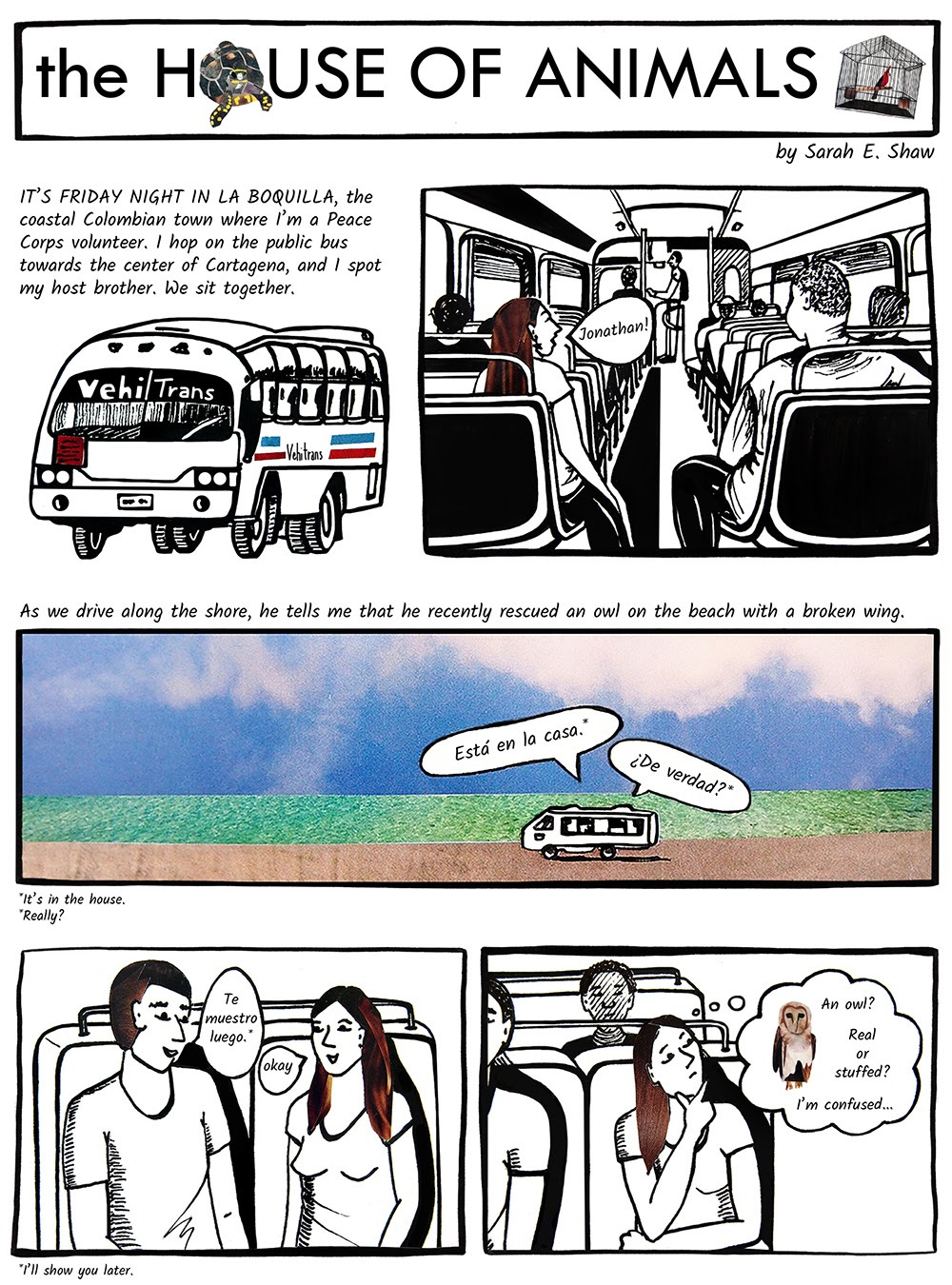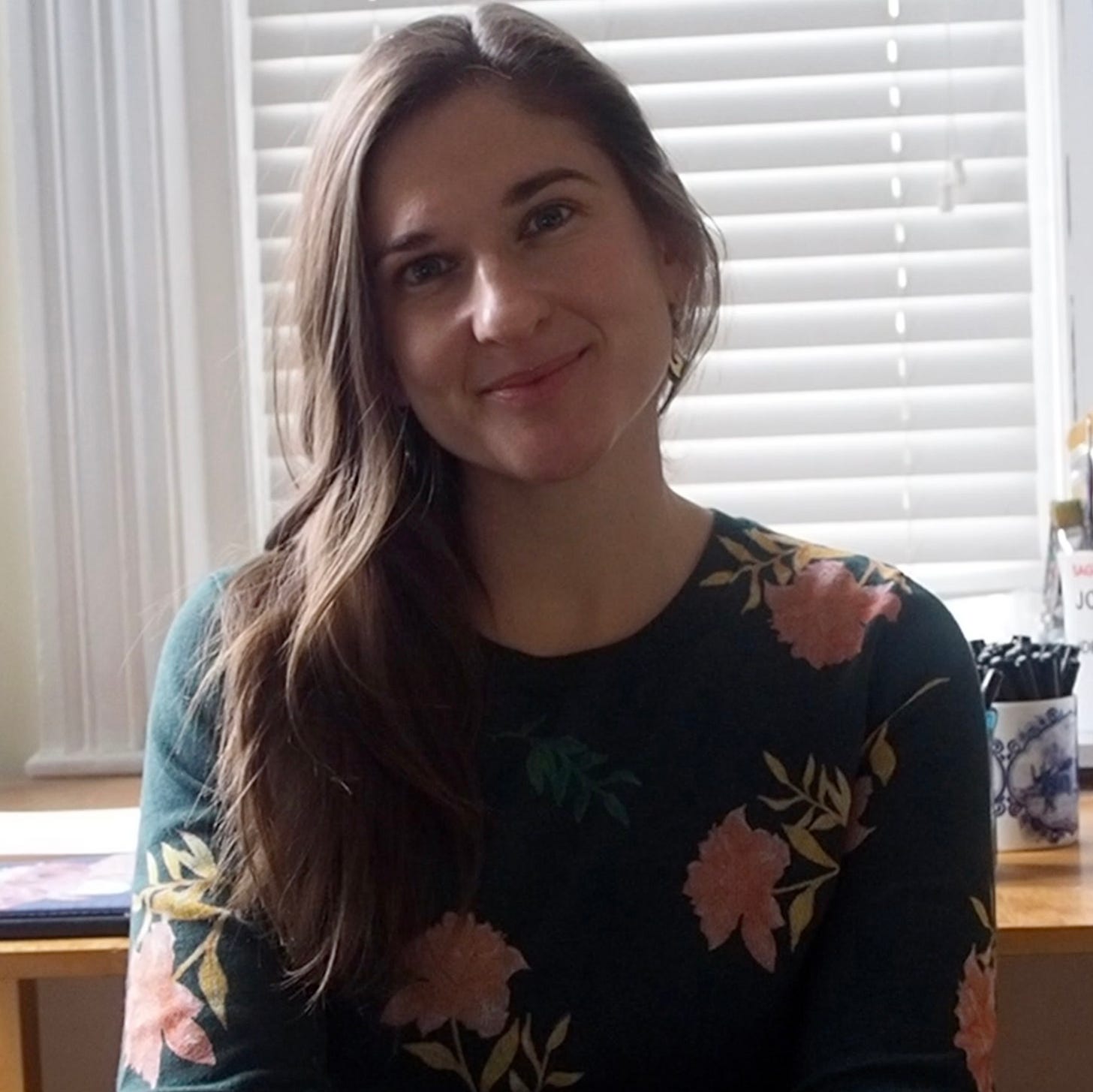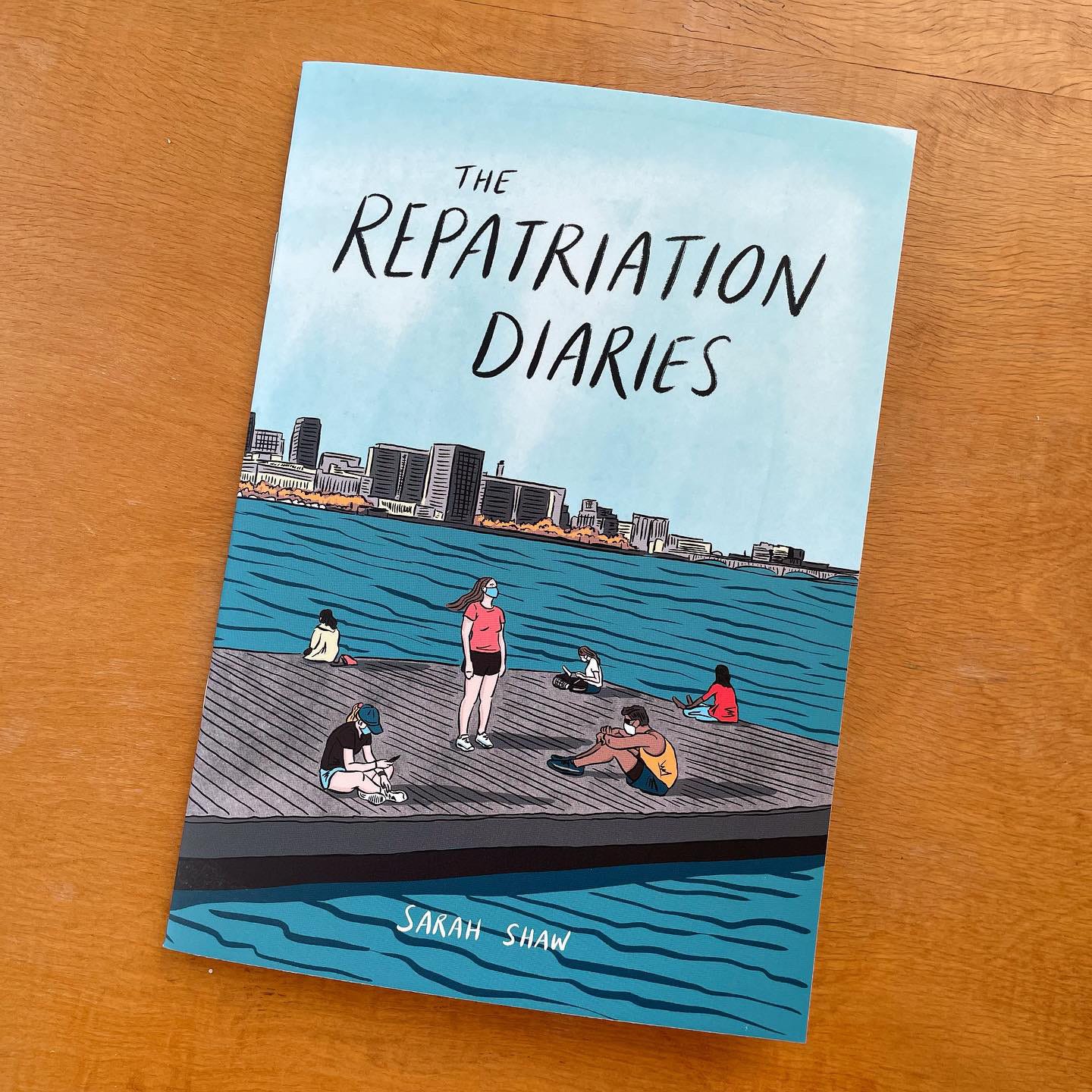An Interview with Sarah Shaw
This week we were lucky to chat with Sarah Shaw, who has traveled the world making comics. Below, Sarah talks about her early work and development, as well as some current projects.
Describe your comics journey--how did you get into making comics?
Besides a few strips in the newspaper, I did not grow up reading comics. Besides Harry Potter, I wasn’t interested in fantasy or superheroes, and those were the genres that I associated with comics. I was a voracious reader and I would often write stories and make art, but I would rarely combine the two.
In art school, I used to paint scenes that depicted people and places from real life. Compared to the conceptual art that my peers produced, my work was too representational, too illustrative, not fine art. In these classes, I rarely received feedback that helped me grow as an artist. I tried to make abstract work for a while. I used to create mixed-media paintings with collaged maps. After some time, I lost a sense of purpose for making them. Once I graduated, I moved to Korea to teach English, and I stopped making art. Instead, I began writing creative non-fiction, photographing my surroundings, and blogging. My blog was quite popular among expats in Korea, and for a while, it allowed me to travel for free by blogging for Korean adventure companies, and most importantly, develop my narrative voice.
When I joined the Peace Corps in 2013 and moved to a Colombian town on the Caribbean coast, I was so inspired by the colors, climate, scenery, and people I met on a daily basis. There was always music blasting and life on the streets. I began drawing elaborate scenes filled with details that told stories about my neighborhood and life on the coast. Around this time, I discovered graphic novels, memoirs, and indie comics, like Guy Delisle’s travelogues about living in Burma and North Korea, Marjane Satrapi’s coming-of-age graphic memoir, Persepolis, and Javier Mariscal’s Chico & Rita, a love story between two jazz musicians. I formed a strong bond with a local graphic designer who encouraged me, inspired me, and helped me find my path in comics and illustration.
I started making autobiographical comics by combining anecdotes with intricate illustrations. My process was painstakingly slow and they took forever to make! My stories felt stiff, and I had a hard time crafting something longer than a few pages. I wanted to create narratives with character arcs and plots that prompted an emotional response from the reader, but I didn’t know where to begin.
A few years later, I joined the MFA Visual Narrative program at SVA where I received intensive storytelling training from several prominent comics artists, illustrators, and multi-disciplinary artists. I also developed digital art skills that allowed me to work more efficiently. Throughout the course, I crafted several stories, including the first draft of a full-length graphic memoir.
How did you develop your voice/unique comics style?
I’m influenced by so many contemporary artists and illustrators, but ultimately, I draw in a way that feels natural. When my work begins to feel forced, I remind myself to stop and start again. Over time, my style has become looser in order to work faster and create more content. I like to leave room to experiment with media, materials, and storytelling structures, and because of this,
I feel like my style is continually changing and adapting to the stories I want to tell.
We noticed on your (awesome) website that you have a few different categories under the umbrella term “visual narrative,” from editorial comics to dairy comics to zines. What draws you to this term? We also loved your moving/animated comics (like “Misconception”) - how do these differ or intersect with more static comics?
Thank you! I decided to title that section “visual narratives” to leave my work more open to exploration. The innovative, multidisciplinary nature of my MFA program pushed me to learn new technical skills and experiment without fear of failure. Although it’s time-consuming, I enjoy adding animation to my comics when it fits the story. I’m restless by nature, and I’m looking for a new way to problem solve and play with new forms. I want to experiment more with analog and digital techniques and make comics with materials such as encaustic, pastels, and watercolor. Of course, I hope to also manipulate these images with digital techniques.
You've done a lot of work with comics and zines in diverse communities, from Colombia to Nepal to New York City. How do you think the comics form creates a community forum?
Comics is such a great way to communicate ideas to a broader audience. By combining words with pictures, we are able to tell a story that goes beyond what writing, illustration, or photography can offer alone. I’ve led zine and comics workshops with so many different types of people--from American high school students to young professionals in Kathmandu, Nepal to online workshops with adults from around the world. It’s always fun and empowering to learn how to tell a story visually with minimal resources and equipment.
Are you working on something now?
I’m working on quite a few projects at the moment, as well as teaching Visual Arts full-time at a secondary school. In the evenings, I teach a course titled, Graphic Memoir in the Continuing Education department at the School of Visual Arts, as well as Travel Illustration at Maine College of Art. Additionally, in the spring, I will begin teaching Comics Journalism at SVA. For the past year, I’ve been working on an ongoing autobiographical comics series called “The Repatriation Diaries” about adjusting to life in the USA after living abroad for several years, and I recently participated in Mini-MICE, a comics expo in Boston. Additionally, I’m working on a couple of assignments for local publications, and hopefully one day, I’ll finish the graphic novel that I began in grad school!
Sarah Shaw is a comics artist, illustrator, and visual arts educator, originally from Southern Maine. Currently, she lives and draws in Boston, MA and teaches at the School of Visual Art and Maine College of Art . Her work can be seen in The Boston Globe and other publications.
Follow her work on Instagram: http://instagram.com/saraheshaw and her website: www.saraheshaw.com
Please consider supporting Sarah’s work by purchasing a comic from her Etsy shop: https://www.etsy.com/shop/saraheillustration
For example, you might check out "The Repatriation Diaries," the first edition of an ongoing series of autobiographical comics about moving back to the USA after ten years of living abroad. The collection features 18 original stories in 32 full-color pages, printed on 100 lb archival satin paper with a matte laminate cover.






